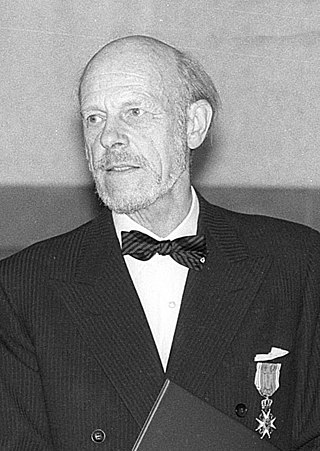Related Research Articles

The culture of Norway is closely linked to the country's history and geography. The unique Norwegian farm culture, sustained to this day, has resulted not only from scarce resources and a harsh climate but also from ancient property laws. In the 19th century, it brought about a strong romantic nationalistic movement, which is still visible in the Norwegian language and media. In the 19th century, Norwegian culture blossomed as efforts continued to achieve an independent identity in the areas of literature, art and music. This continues today in the performing arts and as a result of government support for exhibitions, cultural projects and artwork.

Harriet Backer was a Norwegian painter who achieved recognition in her own time and was a pioneer among female artists both in the Nordic countries and in Europe generally. She is best known for her detailed interior scenes, communicated with rich colors and the interplay of light and shadow.
Events in the year 1880 in Norway.
Ragnar Leif Ulstein MM was a Norwegian journalist, writer and resistance member. He wrote several documentary books from the Second World War, including surveys of the SOE group Norwegian Independent Company 1, volunteers sailing from Norway to Scotland, refugee traffic from Norway to Sweden, and military intelligence in Norway.

Bjarne Rise was a Norwegian painter.
Ellen Einan was a Norwegian poet and illustrator.
Knut Hauge was a Norwegian writer.

Else Marie Jakobsen was a Norwegian designer and textile artist.
Rolf Hauge was a Norwegian army officer with the rank of colonel. Having participated in the 1940 Norwegian Campaign, opposing the German invasion of Norway, he later served with the Norwegian Armed Forces in exile, commanding No. 5 Norwegian Troop of the No. 10 (Inter-Allied) Commando.

Arne Ellerhusen Holm was a Norwegian painter, graphic artist and architect.

Hans Olaf Halvor Heyerdahl was a Norwegian Realist painter. His work was characterized by naturalism and focused largely on portraits and landscape paintings.
Else Halling was a Norwegian textile artist.

Per Aass Deberitz was a Norwegian painter. He was regarded as a neo-impressionist and was also a pupil of Henri Matisse during the years of his stay in Paris from 1909 to 1910.
Liv Nergaard was a Norwegian painter, textile artist, and sculptor. She also created portraits and produced puppet performances for educational use.

Ellen Nordan Lund Iden was a Norwegian painter known for her landscapes, pictures of flowers, interior paintings, and portraits using finely tuned coloring.

Ivar Jerven was a Norwegian graphic artist, painter, and drawer.
Kjerstin Marie Øvrelid was a Norwegian painter. She was known for her poetic paintings of flowers and depictions of the sea and skerries, usually those seen from Holmesund, northeast of Arendal, where she had her summer home.
Knut Monrad was a Norwegian painter. He has been described as a nature poet that interpreted his experience of nature with rapid, broad brushstrokes. In addition to his activity as a painter, Monrad also worked as a translator of English and Swedish literature.
Johan Munthe Cappelen was a Norwegian legal scholar and judge.

Astri Welhaven Heiberg was a Norwegian painter, best known for her portraits of female nudes and landscapes.
References
- 1 2 3 4 5 Norberg, Av Paul. "Utgir Hauge i USA". Dagsavisen.
- ↑ Hvem er hvem? 1984. Oslo: Kunnskapsforlaget, p. 200.
- ↑ Søbye, Espen. 2003. Kathe, alltid vært i Norge: biografi. Oslo: Forlaget Oktober, p. 136.
- ↑ Hauge, Olav H. 2008. The Dream We Carry: Selected and Last Poems of Olav H. Hauge. Port Townsend, WA: Copper Canyon Press, p. xii.
- ↑ Thresher, Tanya. 2004. Twentieth-Century Norwegian Writers, volume 297. Farmington Hills, MI: Thomson/Gale, p. 149.
- 1 2 3 4 5 6 "Bodil Cappelen".